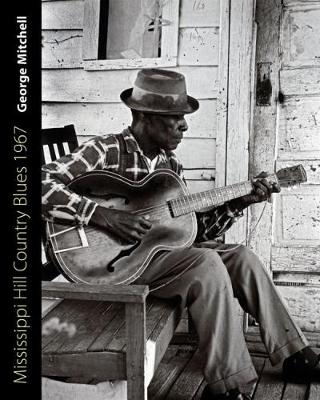American Made Music
1 total work
These photographs document George Mitchell's trip to Mississippi, where he searched for then
unrecorded blues musicians including R. L. Burnside, Jessie Mae Hemphill, and Othar Turner. This
journey yielded recordings of music now on cherished and touted albums and CDs. From Mitchell's
fieldwork many others discovered the region and its distinctive style of blues. Some of the musicians
Mitchell recorded had their lives transformed following his visit.The historic photographs in George Mitchell's Mississippi Hill Country Blues 1967 capture a
vibrant blues tradition at the moment of its discovery. Intimate, without posturing or pandering, these
photographs provide a raw, authentic look at African American blues musicians, their families, and
their stomping grounds in the Mississippi Hill Country at a time when blues music remained a lively,
though waning, part of their community and blues musicians were viewed with respect and pride.
Blues musicians brought pleasure and release to people wrestling with severe poverty and pervasive
discrismination.Mitchell's ability to connect with his subjects is evident in his arresting images. The musicians--
and their families and friends--welcomed him in their homes and at rent parties and fife and drum
picnics. They posed for portraits. They let him hang around with his camera while they cooked supper
or danced up a storm. The book includes Mitchell's interviews, conducted at the time he took the photos, with four of the
musicians, who talk about their music, their lives, and the times in which they live. Running throughout
is the author's recounting of his experience of the seminal musicological odyssey.
unrecorded blues musicians including R. L. Burnside, Jessie Mae Hemphill, and Othar Turner. This
journey yielded recordings of music now on cherished and touted albums and CDs. From Mitchell's
fieldwork many others discovered the region and its distinctive style of blues. Some of the musicians
Mitchell recorded had their lives transformed following his visit.The historic photographs in George Mitchell's Mississippi Hill Country Blues 1967 capture a
vibrant blues tradition at the moment of its discovery. Intimate, without posturing or pandering, these
photographs provide a raw, authentic look at African American blues musicians, their families, and
their stomping grounds in the Mississippi Hill Country at a time when blues music remained a lively,
though waning, part of their community and blues musicians were viewed with respect and pride.
Blues musicians brought pleasure and release to people wrestling with severe poverty and pervasive
discrismination.Mitchell's ability to connect with his subjects is evident in his arresting images. The musicians--
and their families and friends--welcomed him in their homes and at rent parties and fife and drum
picnics. They posed for portraits. They let him hang around with his camera while they cooked supper
or danced up a storm. The book includes Mitchell's interviews, conducted at the time he took the photos, with four of the
musicians, who talk about their music, their lives, and the times in which they live. Running throughout
is the author's recounting of his experience of the seminal musicological odyssey.
